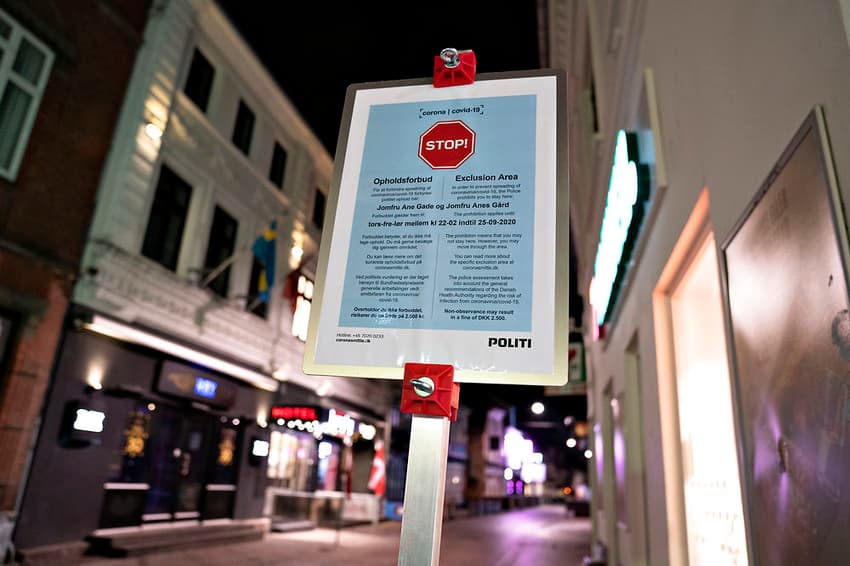Denmark cuts limit on public gatherings from ten people to five

The Danish government is to reduce the current limit on public gatherings from ten to five people.
The decision was confirmed by Prime Minister Mette Frederiksen at a briefing on Tuesday afternoon.
Political party representatives met with the justice minister Nick Hækkerup and health minister Magnus Heunicke earlier on Tuesday.
The new restriction on assembly was advised by the State Serum Institute, the country’s national infectious disease agency, according to a report by TV2.
“Given that large parts of society are locked down, it is expected that more infection can occur in and outside of the home, and that limiting the maximum assembly from ten to five persons in public is a necessary measure to prevent serious infection spread,” states a note sent to party leaders prior to the meeting, obtained by TV2.
Under current lockdown rules, public gatherings are restricted to ten people. In private, the same number is recommended, and authorities also recommend not having any form of social contact with more than 10 people.
-
READ ALSO:
-
Denmark extends lockdown by two weeks
-
Denmark announces national Covid-19 lockdown from Christmas Day
The reports come following calls to tighten restrictions by some of the government’s politically allied parties.
Authorities in Denmark are also concerned over the potential for spread of the more infectious B117 variant of the coronavirus first detected in the United Kingdom.
READ ALSO: How widespread is more contagious variant of Covid-19 in Denmark?
Comments
See Also
The decision was confirmed by Prime Minister Mette Frederiksen at a briefing on Tuesday afternoon.
Political party representatives met with the justice minister Nick Hækkerup and health minister Magnus Heunicke earlier on Tuesday.
The new restriction on assembly was advised by the State Serum Institute, the country’s national infectious disease agency, according to a report by TV2.
“Given that large parts of society are locked down, it is expected that more infection can occur in and outside of the home, and that limiting the maximum assembly from ten to five persons in public is a necessary measure to prevent serious infection spread,” states a note sent to party leaders prior to the meeting, obtained by TV2.
Under current lockdown rules, public gatherings are restricted to ten people. In private, the same number is recommended, and authorities also recommend not having any form of social contact with more than 10 people.
- READ ALSO:
- Denmark extends lockdown by two weeks
- Denmark announces national Covid-19 lockdown from Christmas Day
The reports come following calls to tighten restrictions by some of the government’s politically allied parties.
Authorities in Denmark are also concerned over the potential for spread of the more infectious B117 variant of the coronavirus first detected in the United Kingdom.
READ ALSO: How widespread is more contagious variant of Covid-19 in Denmark?
Join the conversation in our comments section below. Share your own views and experience and if you have a question or suggestion for our journalists then email us at [email protected].
Please keep comments civil, constructive and on topic – and make sure to read our terms of use before getting involved.
Please log in here to leave a comment.